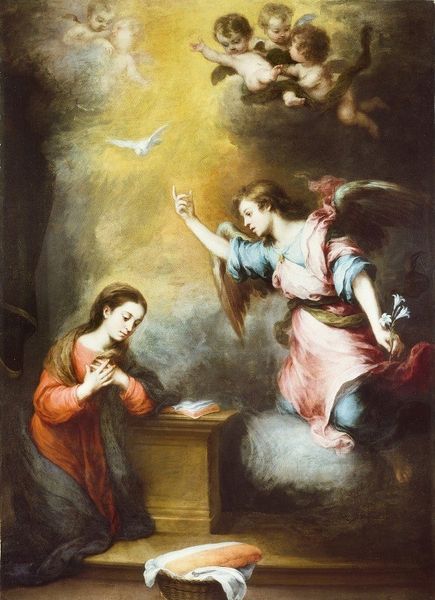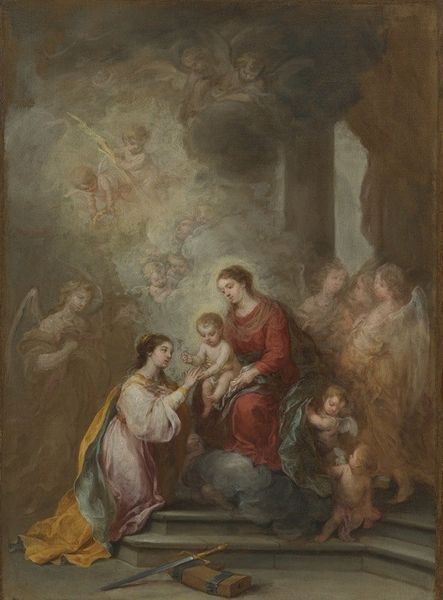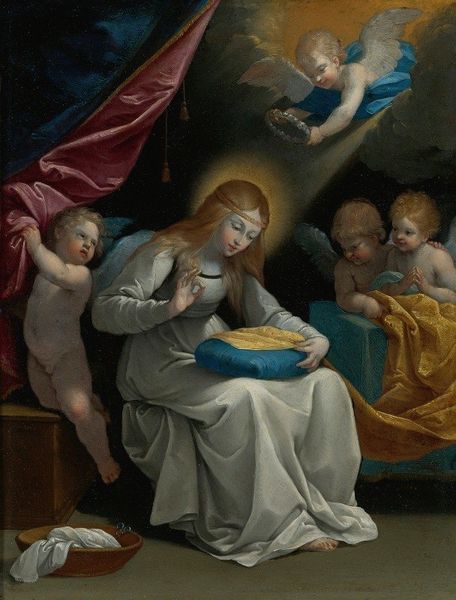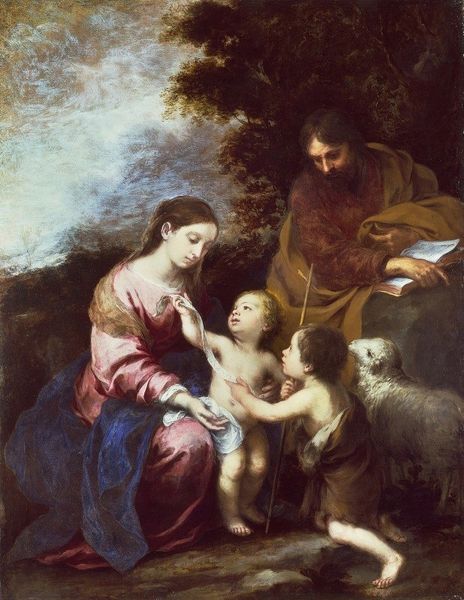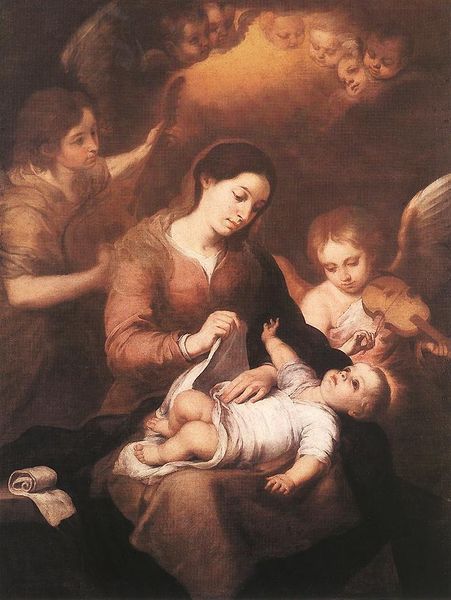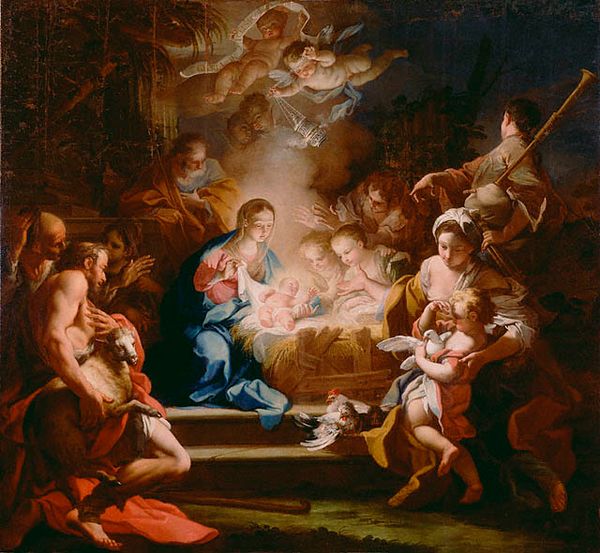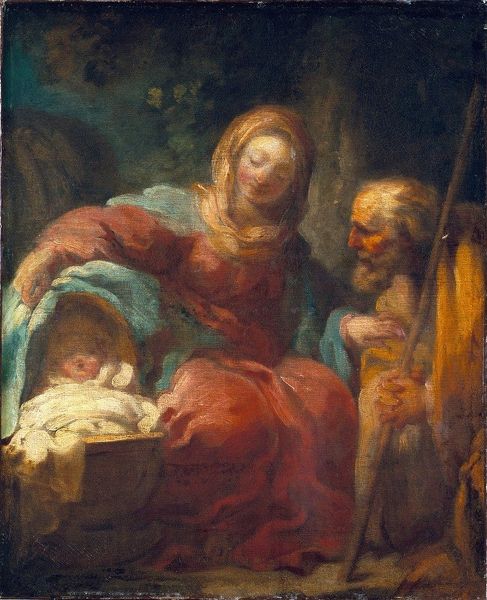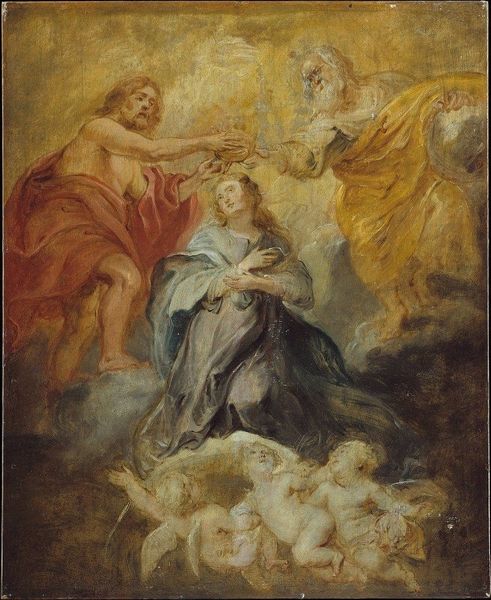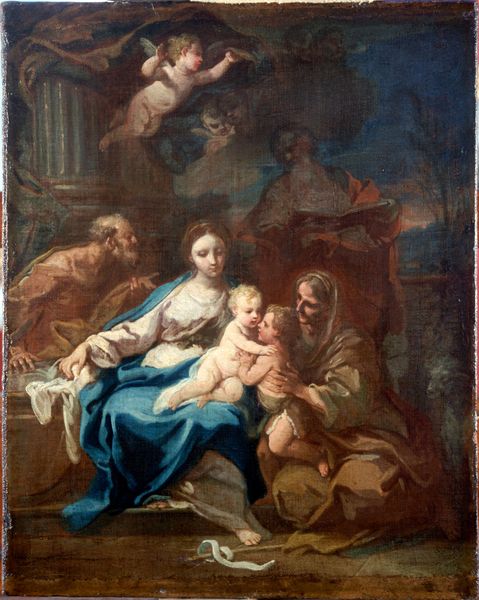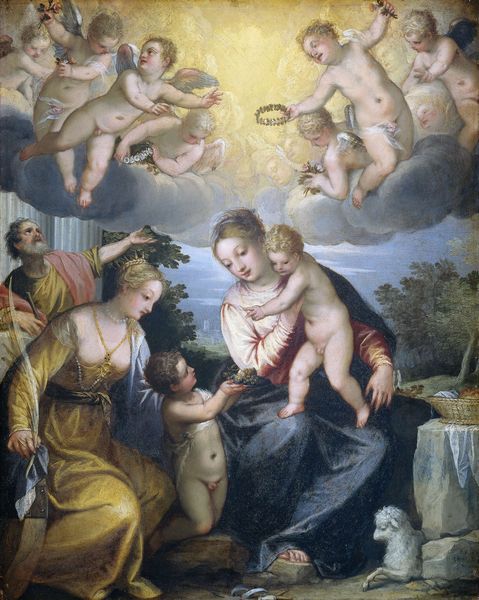
A Nocturnal Scene With The Nativity And The Annunciation To The Shepherds Beyond
0:00
0:00
painting, oil-paint
#
narrative-art
#
baroque
#
painting
#
oil-paint
#
figuration
#
oil painting
#
history-painting
Copyright: Public Domain: Artvee
Curator: Standing before us is an oil painting entitled "A Nocturnal Scene With The Nativity And The Annunciation To The Shepherds Beyond," attributed to Bartolomé Estebán Murillo. The darkness is punctuated by strategically placed light. Editor: It’s almost theatrical, isn't it? The dramatic lighting immediately strikes me – that stark contrast of light and shadow feels almost… manufactured, rather than divinely inspired. How did Murillo achieve this luminosity using only oil? Curator: Murillo's skill lies precisely in manipulating the material qualities of oil paint. Notice how he builds up thin glazes to create those radiant highlights, likely utilizing lead-based pigments for their reflective properties. Consider the context in which Murillo operated: 17th century Seville was a major port, a hub of trade and transatlantic exchange, and a site of major artistic production catering to both the Church and wealthy private patrons. This patronage shaped both the iconography and materials available to him. Editor: Absolutely, Seville’s art scene played a huge part. Thinking about this in terms of audience, I can imagine the impact on churchgoers – seeing something like this hanging above the altar, you know? It’s more than just paint, it’s a deliberate act of visual rhetoric aimed at reinforcing religious doctrine, maybe even tied to counter-reformation efforts through sentimentalized displays of devotion. I am really drawn into that little shepherd scene up top. Curator: Indeed. And it raises questions about art as commodity. Who commissioned it, for what price, and what statement were they trying to make in displaying it? Look closely at the composition; note the subtle gradations from earthy browns to almost ethereal whites, built from layers of labor. Editor: Right, it speaks to the role art played, reflecting and shaping perceptions. In that small, darkened scene up top, we get an entire narrative encapsulated within a tiny area. Curator: I'm drawn back to thinking about the base components that come together in this act of devotional making: the pigment itself, ground and mixed perhaps by apprentices, the woven linen of the canvas, stretched on a wooden frame, the artist making calculated movements of his hand day after day to complete it. Editor: Murillo's canvas provides a tangible, compelling glimpse into not just religious belief but also its era. It serves almost as propaganda in image form. A reminder of art's intricate links to power structures and societal viewpoints throughout time. Curator: Exactly. Understanding those processes helps reveal a whole range of socio-economic conditions inherent to the piece. Editor: So much to think about beyond simply the aesthetic impression!
Comments
No comments
Be the first to comment and join the conversation on the ultimate creative platform.

